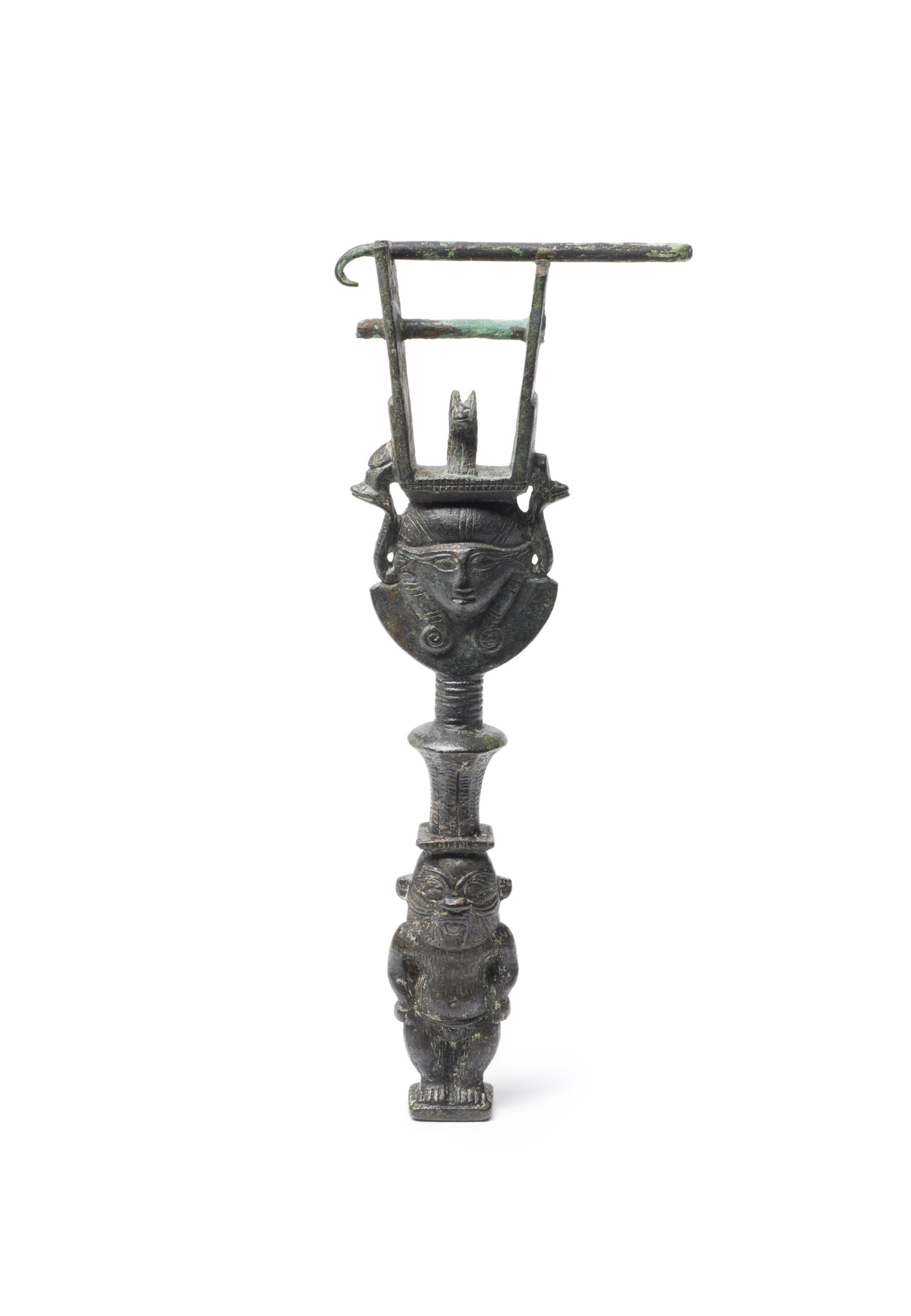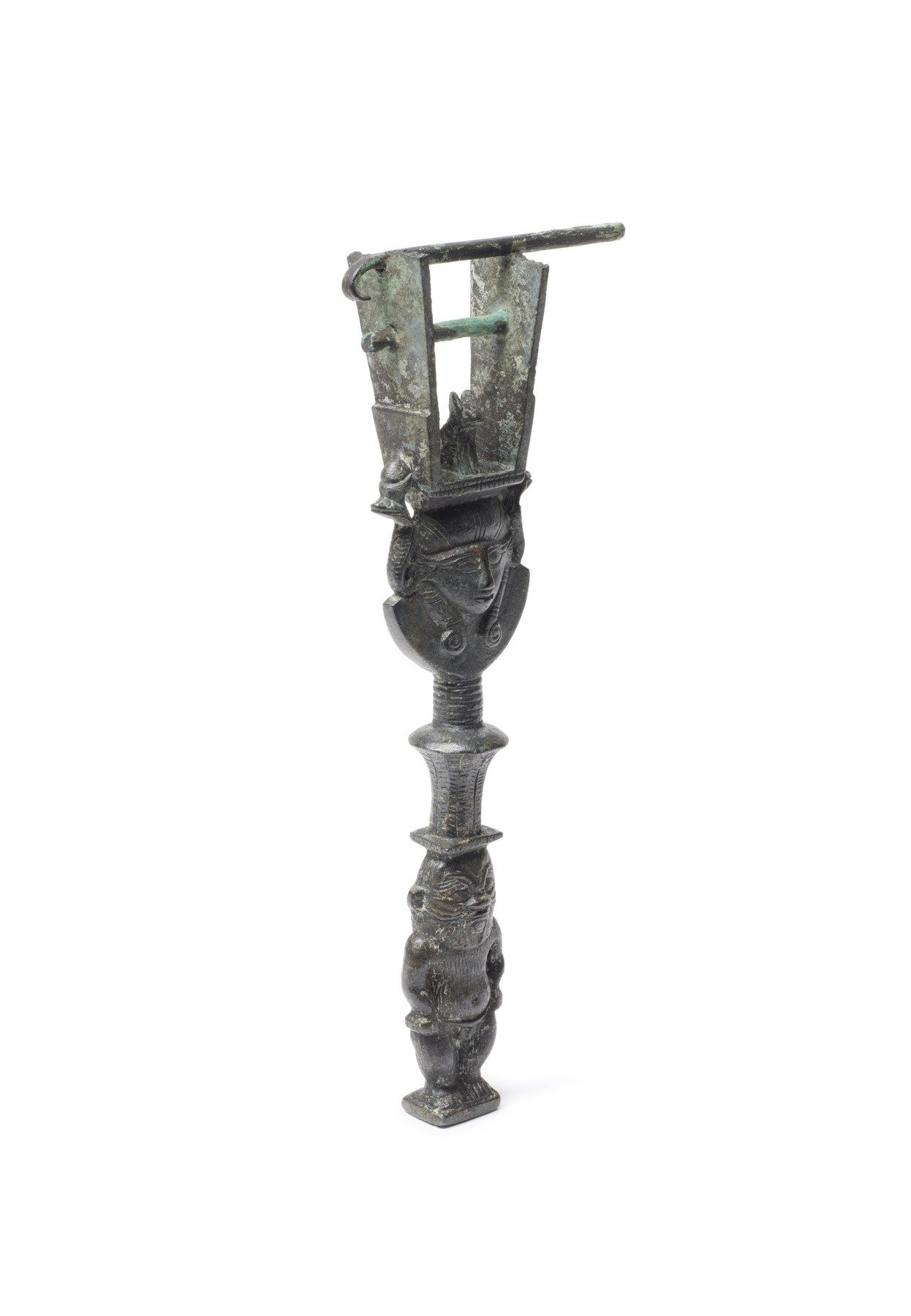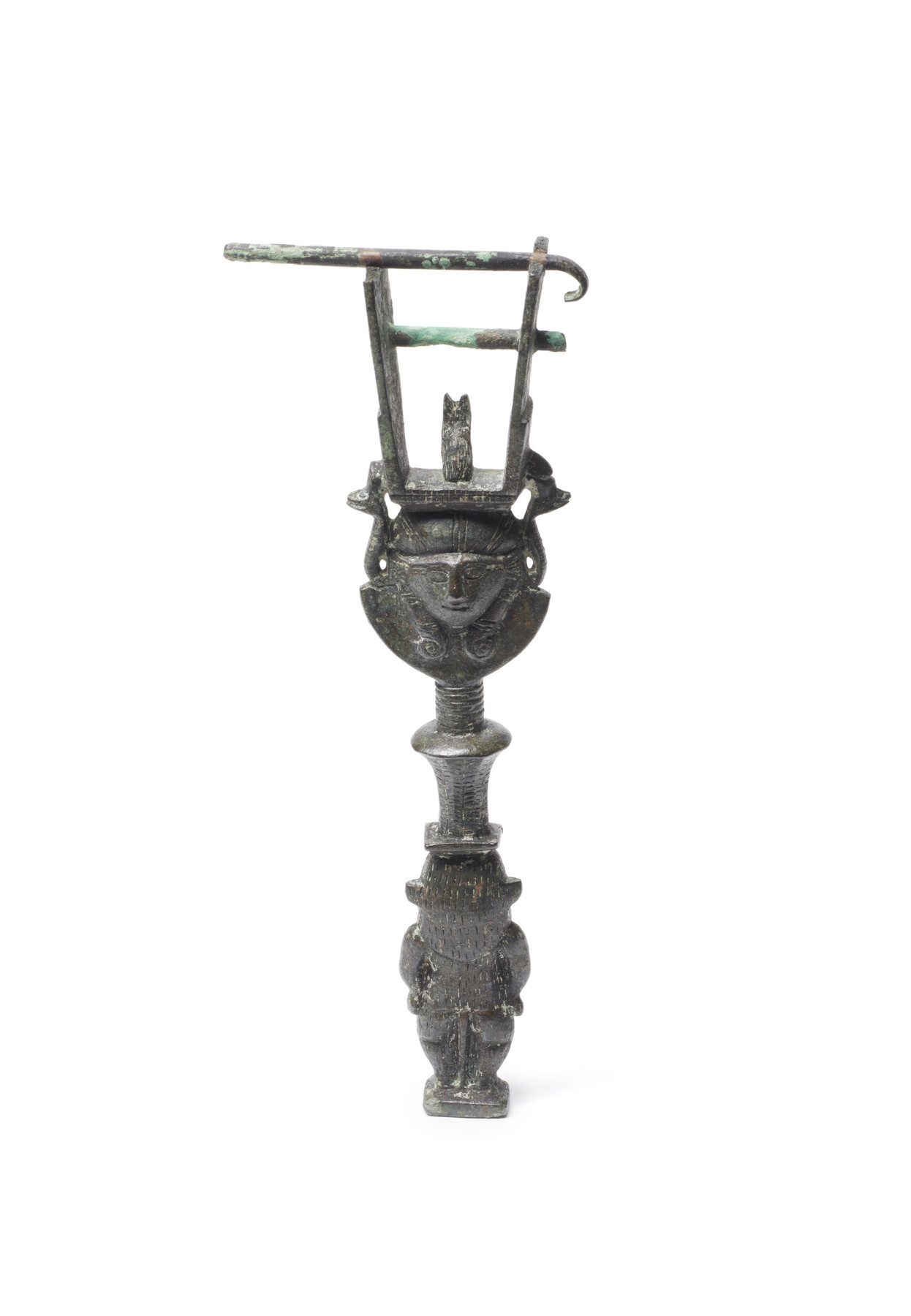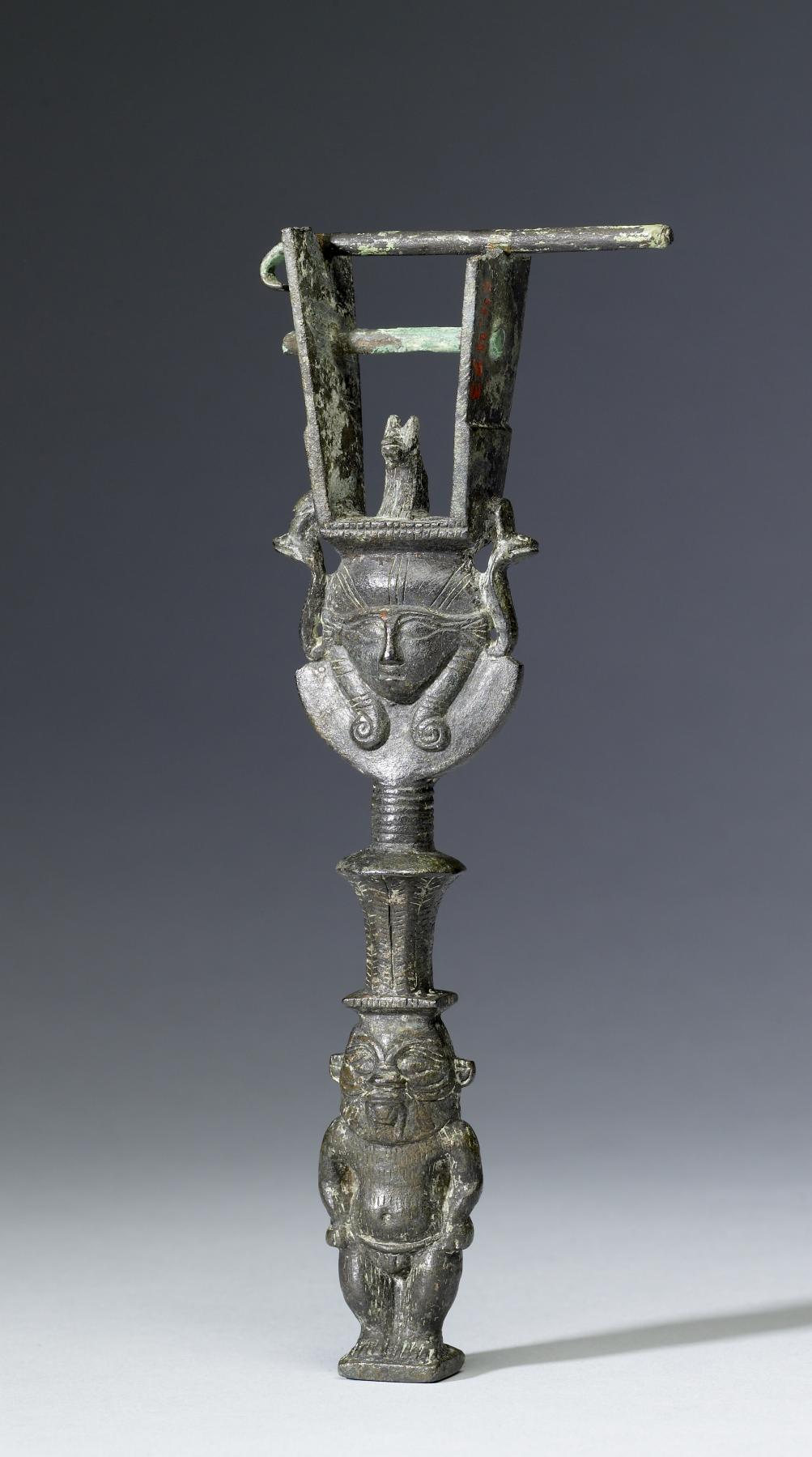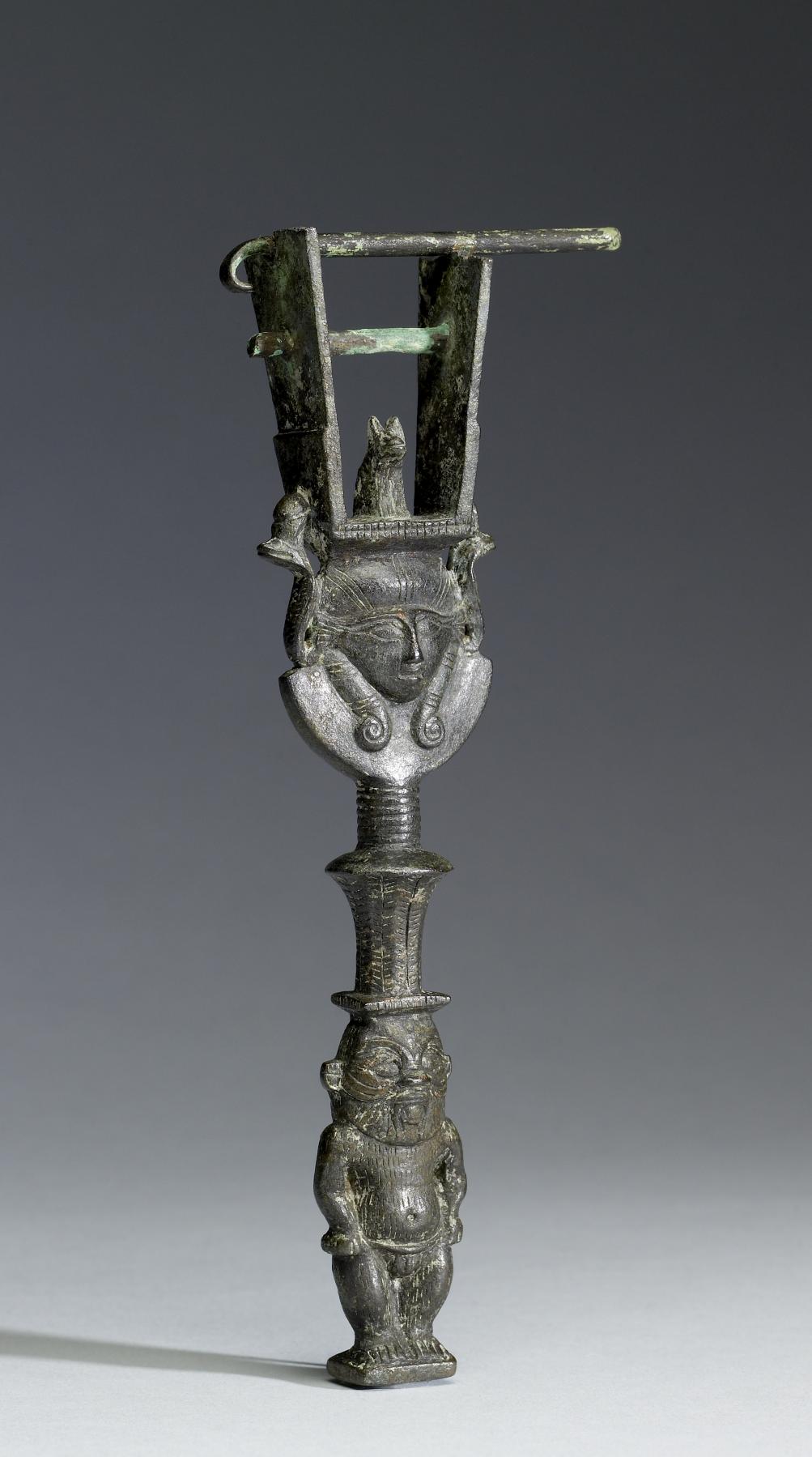Naos-Sistrum with Bes-Shaped Handle
Special instruments were used by priests and priestesses to invoke the deities or to perform rituals before them. One of the most important instruments was the sistrum, a rattle associated with the goddess Hathor. The goddess's face is often incorporated into the sistrum's design, as is, in this example, an image of the god Bes, which serves as the object's handle. Inside of the naos-shaped top is a small cat below the clappers.
Provenance
Provenance (from the French provenir, 'to come from/forth') is the chronology of the ownership, custody, or location of a historical object. Learn more about provenance at the Walters.
[Found in Upper Egypt]; Dikran Kelekian, New York and Paris, [date and mode of acquisition unknown]; Henry Walters, Baltimore, 1913, by purchase; Walters Art Museum, 1931, by bequest.
Exhibitions
| 2006-2007 | Daily Magic in Ancient Egypt. The Walters Art Museum, Baltimore. |
Conservation
| Date | Description | Narrative |
|---|---|---|
| Examination | Examined | |
| Examination | Examined in preparation for exhibition. |
Geographies
Egypt (Place of Origin)
Measurements
6 15/16 in. (17.6 cm)
Credit Line
Acquired by Henry Walters, 1913
Location in Museum
Not on view
Accession Number
In libraries, galleries, museums, and archives, an accession number is a unique identifier assigned to each object in the collection.
In libraries, galleries, museums, and archives, an accession number is a unique identifier assigned to each object in the collection.
54.493

